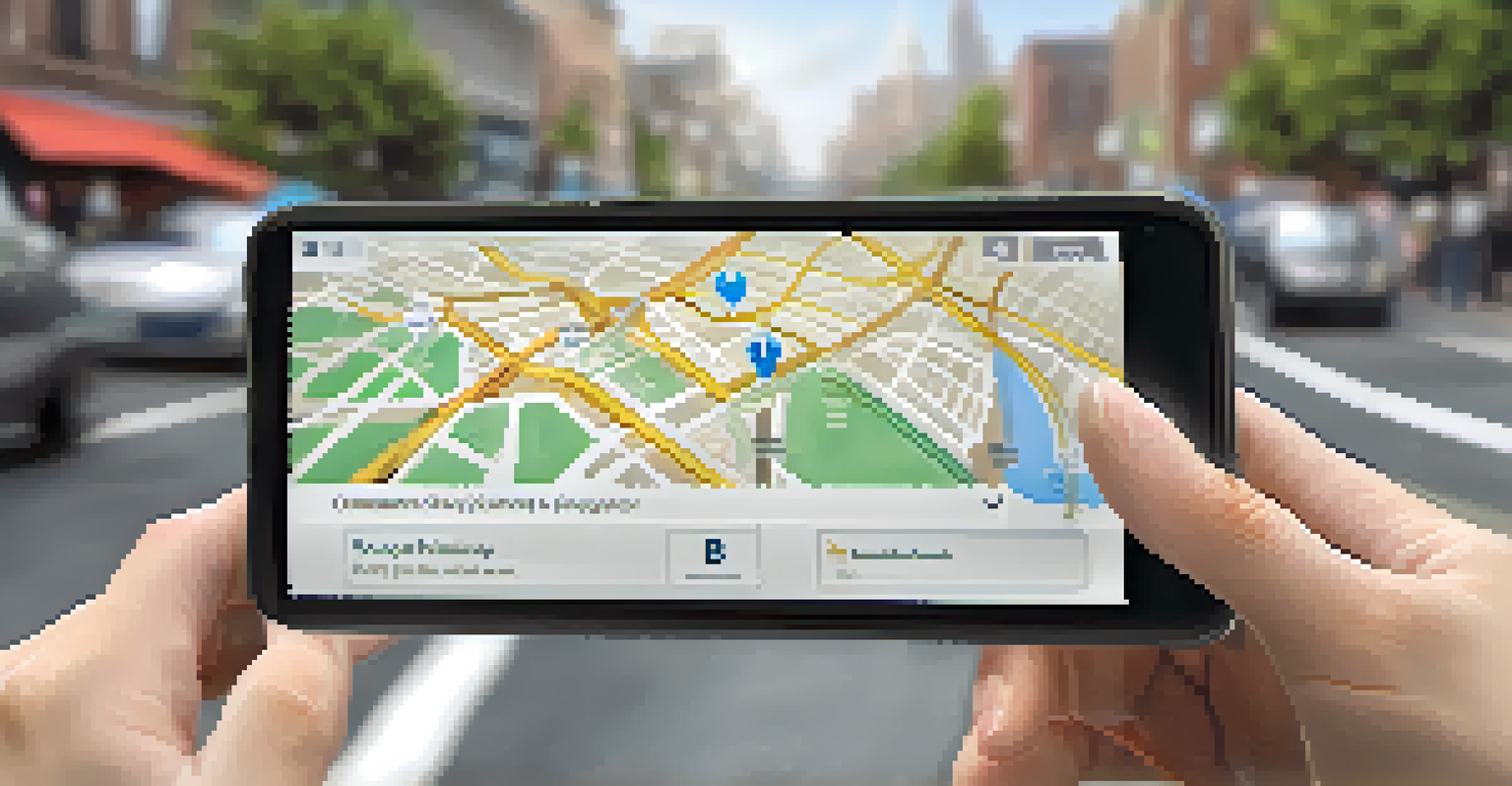Empowering Austin Residents Through Civic Tech Platforms

Understanding Civic Tech and Its Importance
Civic tech refers to the use of technology to enhance civic engagement and community participation. In essence, it bridges the gap between residents and their local government, fostering a more transparent and inclusive environment. For Austin residents, civic tech platforms provide tools that empower them to voice their opinions, report issues, and stay informed about local matters.
Technology is best when it brings people together.
Imagine a neighborhood where you can easily report a pothole or request maintenance for a park with just a few clicks. This is the promise of civic tech. It's not just about convenience; it's about giving residents a direct line to their government, ensuring that their concerns are addressed promptly. This kind of engagement can lead to more responsive governance and a stronger sense of community.
Moreover, the rise of civic tech reflects a broader trend toward digitalization in public services. As more people turn to their devices for information and interaction, it becomes crucial for local governments to adapt. By embracing these platforms, Austin can enhance its civic engagement, making it easier for residents to take part in the decision-making processes that affect their lives.
Key Civic Tech Platforms in Austin
Austin is home to several notable civic tech platforms that are transforming how residents interact with their city. For example, platforms like SeeClickFix allow residents to report non-emergency issues directly to city officials, making the reporting process straightforward and efficient. This tool not only empowers citizens but also helps city workers prioritize and address concerns based on real-time feedback.

Another significant platform is Austin's Open Data Portal, which provides residents access to a wealth of information about city operations, budgets, and services. By promoting transparency, this portal allows residents to understand how their tax dollars are spent and fosters accountability among city officials. The more informed residents are, the more effectively they can advocate for their needs.
Civic Tech Enhances Community Voice
Civic tech platforms empower residents to engage directly with local government, fostering transparency and responsiveness.
Additionally, social media channels and community forums play a vital role in civic tech. They serve as platforms where residents can discuss local issues, share ideas, and mobilize community efforts. By leveraging these digital spaces, Austin's residents can build strong networks, enhancing their collective impact on civic matters.
Enhancing Community Engagement Through Technology
Civic tech platforms are more than just tools; they serve as catalysts for community engagement. By providing easy access to information and communication channels, these platforms encourage residents to participate in local governance actively. This shift not only enhances participation but also cultivates a sense of ownership among residents regarding their community's future.
Civic engagement is about more than just voting; it’s about being involved in your community and making a difference.
For instance, through online surveys and polls, residents can express their preferences on community projects and initiatives. This direct feedback mechanism ensures that local government decisions align with the needs and desires of the community. It’s like having a community meeting at your fingertips—everyone gets a voice, regardless of their schedule or mobility.
Moreover, civic tech can help break down barriers to participation, especially for marginalized groups who may feel excluded from traditional civic processes. By creating inclusive platforms that cater to diverse communities, Austin can ensure that all voices are heard, fostering a richer, more representative civic dialogue.
Case Studies: Successful Civic Tech Initiatives
Several successful civic tech initiatives in Austin showcase the effectiveness of these platforms. One notable example is the 'Participatory Budgeting' initiative, where residents can directly vote on how a portion of the city budget is spent. This innovative approach not only empowers residents but also enhances trust in local government, as people see their input translate into tangible outcomes.
Another example is the use of mobile applications that facilitate community engagement during city council meetings. These apps allow residents to submit questions and comments in real-time, ensuring that their concerns are addressed during discussions. This level of engagement transforms what can often feel like a distant and unapproachable process into a collaborative experience.
Key Platforms Transform Engagement
Notable civic tech tools like SeeClickFix and the Open Data Portal are revolutionizing how Austin residents report issues and access information.
These case studies highlight the potential of civic tech to create meaningful change in Austin. By examining what works, the city can continue to refine these initiatives, ensuring they meet the evolving needs of its residents.
Challenges Facing Civic Tech in Austin
Despite the many benefits of civic tech, several challenges must be addressed to maximize its impact. One significant hurdle is the digital divide; not all residents have equal access to technology or the internet. This disparity can lead to unequal participation in civic processes, leaving some voices unheard while others dominate the conversation.
Another challenge is ensuring data privacy and security. As residents engage with civic tech platforms, they may be concerned about how their personal information is used and protected. Local governments must prioritize transparency and robust security measures to build trust and encourage participation.
Lastly, there can be a resistance to change within local government structures. Traditional methods of engagement have been in place for years, and shifting to a more tech-focused approach requires training and cultural adjustments. By fostering a willingness to embrace innovation, Austin can overcome these obstacles and fully realize the potential of civic tech.
Future Trends in Civic Tech for Austin
As technology continues to evolve, so too will the landscape of civic tech in Austin. One emerging trend is the integration of artificial intelligence (AI) to analyze community feedback and prioritize issues. This can streamline city operations and ensure that resources are allocated where they are needed most, ultimately enhancing the quality of life for residents.
Additionally, we can expect to see an increase in mobile-first solutions. With more people using smartphones as their primary device, civic tech platforms will need to prioritize mobile accessibility. This shift will make it even easier for residents to engage with their local government while on the go, ensuring that civic participation becomes a seamless part of everyday life.
Challenges to Civic Tech Adoption
Despite its benefits, civic tech faces hurdles such as the digital divide and concerns over data privacy that must be addressed for effective participation.
Finally, community-driven development of civic tech solutions is likely to gain momentum. By involving residents in the design and implementation of these platforms, the city can create tools that truly reflect the needs and preferences of its community. This collaborative approach not only enhances functionality but also empowers residents to take an active role in shaping their civic landscape.
Conclusion: The Path Forward for Austin's Civic Tech
Empowering Austin residents through civic tech platforms is not just about technology; it's about fostering a culture of engagement and inclusivity. By leveraging these tools, the city can enhance transparency, accountability, and participation, ultimately leading to better outcomes for all residents. As we've seen, the potential for civic tech to transform community involvement is vast and exciting.
To fully realize this potential, ongoing collaboration between residents, local government, and tech developers is essential. By working together, they can create platforms that address the unique challenges of Austin while celebrating the city's diversity. This collective effort will ensure that every resident has a voice in shaping their community's future.

As Austin moves forward, the commitment to civic tech should remain strong. The journey toward a more engaged and empowered community is ongoing, but with the right tools and determination, Austin can lead the way in redefining civic participation for the digital age.